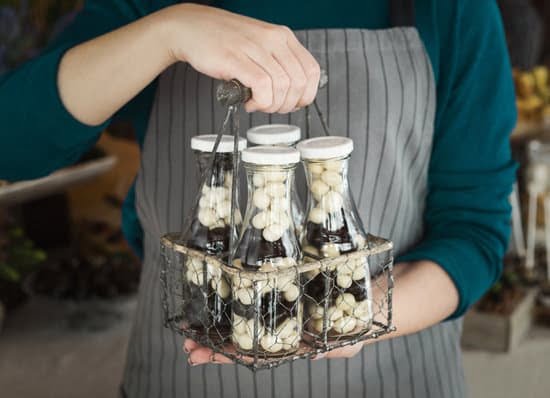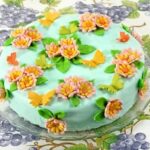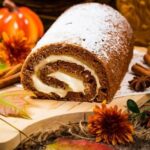Are you wondering how to decorate a cake with plastic icing? Plastic icing, also known as fondant, has become increasingly popular for cake decoration due to its versatility and ability to create intricate designs. Unlike buttercream or royal icing, plastic icing allows for smoother and more precise decorating, making it a favorite choice for professional bakers and home decorators alike.
In this article, we will explore the art of decorating a cake with plastic icing, providing step-by-step instructions and tips for achieving stunning results. From basic techniques to more advanced designs, you’ll learn everything you need to know to elevate your cake decorating skills.
Whether you’re a beginner looking to delve into the world of cake decoration or an experienced baker wanting to expand your repertoire, mastering the art of working with plastic icing will open up endless possibilities for creating beautiful and impressive cakes. So let’s dive in and discover the exciting world of plastic icing decoration.
Tools and Materials Needed
When it comes to decorating a cake with plastic icing, having the right tools and materials is essential for achieving professional-looking results. Here is a detailed list of all the items you will need to get started:
Tools:
1. Piping bags: Disposable or reusable piping bags are essential for applying plastic icing to the cake.
2. Piping tips: Different sizes and shapes of piping tips are used to achieve various designs and textures on the cake.
3. Spatula: An offset spatula is useful for spreading and smoothing out the icing on the cake.
4. Palette knife: A palette knife can be used for creating smooth surfaces and sharp edges on the cake.
Materials:
5. Plastic icing (also known as fondant): Different colors of ready-to-use plastic icing will be needed for creating decorations and covering the cake.
6. Edible food coloring: If you want to customize the colors of your plastic icing, edible food coloring gels or powders can be used.
7. Cornstarch or powdered sugar: Dusting surfaces with cornstarch or powdered sugar helps prevent sticking when working with plastic icing.
8. Clear alcohol or lemon extract: These are used to thin out plastic icing if it becomes too stiff.
This comprehensive list of tools and materials will set you up for success when decorating a cake with plastic icing.
Once you have gathered all these items, you will be well-equipped to start decorating your cake in a variety of styles using plastic icing. In addition to these basics, there may be specialty tools that you want to incorporate into your toolkit as you become more experienced in cake decorating with plastic icing. It’s important to use high-quality ingredients and tools, as they can greatly impact the final result of your decorated cake.
Whether you’re just starting out or looking to expand your collection, having these essential tools and materials on hand will prepare you for any creative endeavor involving plastic icing on cakes.
Preparing the Cake
When it comes to decorating a cake with plastic icing, the first step is to ensure that the cake itself is properly prepared. This involves a few key steps that will set the foundation for a beautifully decorated cake. Here are the step-by-step instructions on how to prepare the cake for icing:
1. Leveling the Cake: Before you begin decorating, it’s essential to have a level surface to work with. Use a long, serrated knife to carefully slice off any uneven or domed areas on the top of the cake. This will create a flat surface for decorating and help prevent any lopsidedness in your final design.
2. Crumb-Coating: Once your cake is leveled, it’s time to apply a crumb coat. A crumb coat is a thin layer of icing that seals in any loose crumbs on the surface of the cake, providing a smooth base for additional layers of icing. To crumb coat your cake, spread a thin layer of plastic icing over the entire surface of the cake, making sure to fill in any gaps or imperfections.
3. Chilling the Cake: After applying the crumb coat, it’s recommended to chill the cake in the refrigerator for about 15-20 minutes. This will allow the icing to firm up and set, making it easier to work with when adding additional layers or designs.
By following these steps, you’ll have a well-prepared canvas for decorating with plastic icing. The leveled and crumb-coated cake will provide a solid foundation for creating beautiful designs and intricate decorations using plastic icing techniques for an impressive finished product.
Working With Plastic Icing
First, it’s crucial to ensure that the work surface and hands are clean and dry before handling plastic icing. This will prevent any unwanted marks or dirt from transferring onto the icing. Additionally, lightly dusting the work surface with cornstarch or powdered sugar can prevent the icing from sticking while you roll it out.
When rolling out the plastic icing, use a rolling pin to achieve an even thickness. Aim for a thickness of about ¼ inch to ensure that the icing is sturdy enough to hold its shape but not too thick that it becomes difficult to work with. It’s also important to lift and rotate the icing periodically while rolling it out to prevent it from sticking to the surface.
To achieve different textures and shapes with plastic icing, consider using various tools such as embossing mats, texture sheets, and cutters. These tools can add intricate patterns and details to the icing, allowing you to create visually stunning designs on your cake. Experimenting with different techniques will help you develop your own unique style and expand your skills as a cake decorator.
| Working With Plastic Icing Tips | Techniques for Working With Plastic Icing |
|---|---|
| Ensure clean and dry work surface | Use embossing mats and texture sheets |
| Roll out evenly at about ¼ inch thickness | Experiment with different shaping tools |
Working with plastic icing requires patience and practice, but mastering these tips and techniques will allow you to create beautiful designs on your cakes. Whether you’re aiming for a smooth finish or intricate details, understanding how to handle plastic icing effectively is key in achieving professional-looking results in cake decorating.
Basic Decorating Techniques
Working with plastic icing to decorate a cake can be a fun and rewarding experience, allowing you to add your personal touch to any baked creation. In this section, we will delve into the basic decorating techniques that will help you get started on your cake decorating journey.
Piping
Piping is one of the most commonly used techniques when it comes to decorating cakes with plastic icing. To pipe icing onto a cake, fill a piping bag with the desired color of icing and attach a piping tip. Hold the bag at a 90-degree angle to the surface of the cake and apply even pressure to create different shapes or patterns. Experiment with different piping tips to achieve various effects, such as stars, shells, or rosettes.
Creating Borders
Borders are an essential element in cake decorating and can add a polished look to any design. Using a piping bag fitted with a small round tip, carefully pipe icing along the edges of the cake to create borders in different styles. You can opt for simple straight lines, scalloped edges, or even zig-zag patterns for added flair.
Making Simple Designs
Aside from piping and creating borders, there are countless simple designs that you can easily achieve using plastic icing. This could include writing messages onto the cake, adding polka dots or stripes, or creating basic shapes such as hearts or stars. Using contrasting colors can make these simple designs stand out and add visual interest to your decorated cake.
By mastering these basic decorating techniques, you will gain confidence in your ability to work with plastic icing and be well on your way to creating beautifully decorated cakes that are sure to impress. With practice and patience, you will soon be able to move on to more advanced techniques and designs.
Advanced Decorating Techniques
Once you have mastered the basic decorating techniques for plastic icing, the next step is to explore more intricate designs and techniques. Piping flowers is a popular choice when it comes to advanced cake decorating. With the right piping tips and a steady hand, you can create beautiful floral designs that will impress your friends and family.
Creating 3D shapes with plastic icing can take your cake decorating skills to the next level. With the use of molds and sculpting tools, you can make realistic-looking figures, animals, or any other shape you desire. This technique adds a unique and personalized touch to your cakes.
Another technique to consider is using fondant tools to create intricate designs on your cake. Fondant tools can be used for embossing patterns, cutting out shapes, and adding delicate details to your cake decorations. By experimenting with different fondant tools, you can elevate the overall look of your cake design.
Incorporating these advanced decorating techniques into your cake decorating repertoire will allow you to unleash your creativity and create stunning works of edible art. Whether you’re piping delicate flowers, crafting 3D shapes, or using fondant tools for intricate details, these techniques will set your cakes apart from the rest.
| Decorating Technique | Description |
|---|---|
| Piping Flowers | Create beautiful floral designs using piping tips and plastic icing |
| Creating 3D Shapes | Use molds and sculpting tools to make realistic figures or objects with plastic icing |
| Using Fondant Tools | Add intricate details and patterns with various fondant tools for a unique cake design |
Troubleshooting
When decorating a cake with plastic icing, it’s important to be aware of the common issues that may arise during the process. These issues can include air bubbles in the icing and inconsistent icing texture, which can affect the overall look of the cake. However, with some troubleshooting techniques, these problems can be easily fixed to ensure a beautiful end result.
Air Bubbles in the Icing
Air bubbles are one of the most common issues when working with plastic icing. These bubbles can create an uneven surface and affect the smoothness of the final decoration. To avoid air bubbles, it’s crucial to knead the icing thoroughly before use.
Additionally, gently tapping and rolling out the icing on a flat surface can help release any trapped air. If air bubbles do appear on the decorated cake, a simple fix is to use a small pin or needle to carefully prick and release the trapped air without damaging the design.
Inconsistent Icing Texture
Another issue that may occur while decorating with plastic icing is inconsistent texture in the icing itself. This can result in lumps or uneven lines in your decorations. To ensure a smooth and consistent texture, it’s important to properly knead the icing until it is soft and pliable.
If the consistency is too stiff, adding a small amount of vegetable shortening or corn syrup can help achieve a smoother texture. On the other hand, if the icing is too soft, adding more powdered sugar can help thicken it up.
By being aware of these common issues and implementing these troubleshooting techniques, decorators can ensure a smooth and professional-looking finish on their cakes decorated with plastic icing. With practice and patience, mastering these troubleshooting tips will lead to beautifully decorated cakes that will impress any audience.
Finishing Touches
After successfully piping and creating beautiful designs with plastic icing, the final step in decorating a cake is adding those finishing touches to make it truly stand out. Whether you want to add a touch of sparkle with glitter, an elegant touch with edible pearls, or other embellishments, these tips will help take your decorated cake to the next level.
When it comes to adding glitter to a cake, it’s important to use edible glitter specifically designed for use on food. You can find edible glitter in a variety of colors and sizes, allowing you to customize the look of your cake to fit any theme or occasion. To apply the glitter, simply sprinkle it over the desired areas of the cake using a small shaker or by carefully sprinkling it on by hand for more control over placement.
Another popular way to add an extra touch of elegance to a decorated cake is by using edible pearls. These small, round decorations come in various sizes and can be applied individually or in clusters for different effects. Edible pearls are perfect for adding a sophisticated finish to wedding cakes, anniversary cakes, or any other special occasion where you want to create a luxurious look.
In addition to glitter and pearls, there are various other embellishments that can be used to enhance the overall appearance of a decorated cake. These include edible flowers, metallic dragees, and intricate sugar decorations. By incorporating these elements into your design, you can create a stunning masterpiece that will leave everyone impressed with your skills in decorating with plastic icing.
Conclusion
In conclusion, learning how to decorate a cake with plastic icing can open up a world of creative possibilities for bakers of all skill levels. From basic piping techniques to more advanced designs, the use of plastic icing allows for endless opportunities to express creativity and add a personalized touch to any cake. By following the outlined steps and tips provided in this article, anyone can learn the art of cake decorating with plastic icing.
It’s essential to remember that practice makes perfect when it comes to working with plastic icing. Experimenting with different textures, shapes, and colors will help refine your skills and develop a unique decorating style. The troubleshooting section offers valuable insights into common issues that may arise while using plastic icing, providing solutions to ensure a smooth decorating process.
So don’t be afraid to get creative and try out new techniques when decorating your next cake with plastic icing. Whether you’re hosting a special event or simply want to impress your friends and family with a beautifully decorated dessert, mastering the art of cake decorating can become a rewarding hobby. With patience, dedication, and a bit of creativity, anyone can learn how to decorate a cake with plastic icing like a pro.
Frequently Asked Questions
What to Do Before Putting Fondant on a Cake?
Before putting fondant on a cake, it’s important to ensure that the cake is completely cooled and free from any crumbs or icing residue. The surface should also be smooth and level for best results when applying the fondant.
How Do You Ice a Cake With Fondant Icing for Beginners?
For beginners, icing a cake with fondant can seem daunting, but it’s actually quite simple with the right technique. Start by applying a thin layer of buttercream or ganache to the cake as a base for the fondant.
Then, roll out the fondant to an even thickness and carefully drape it over the cake, smoothing out any air bubbles or wrinkles with a fondant smoother.
What Is the Difference Between Plastic Icing and Fondant?
Plastic icing, also known as gum paste or modeling paste, is different from fondant in that it contains added ingredients such as gums and egg whites to make it firmer and more pliable for sculpting decorations. Fondant, on the other hand, is used primarily for covering cakes and has a smoother texture when rolled out.
Both are versatile for cake decorating but have different applications based on their consistency and elasticity.

Welcome to our cake decorating blog! My name is Destiny Flores, and I am the proud owner of a cake decorating business named Cake Karma. Our mission is to provide delicious, beautiful cakes for all occasions. We specialize in creating custom cakes that are tailored specifically to each customer’s individual needs and tastes.





